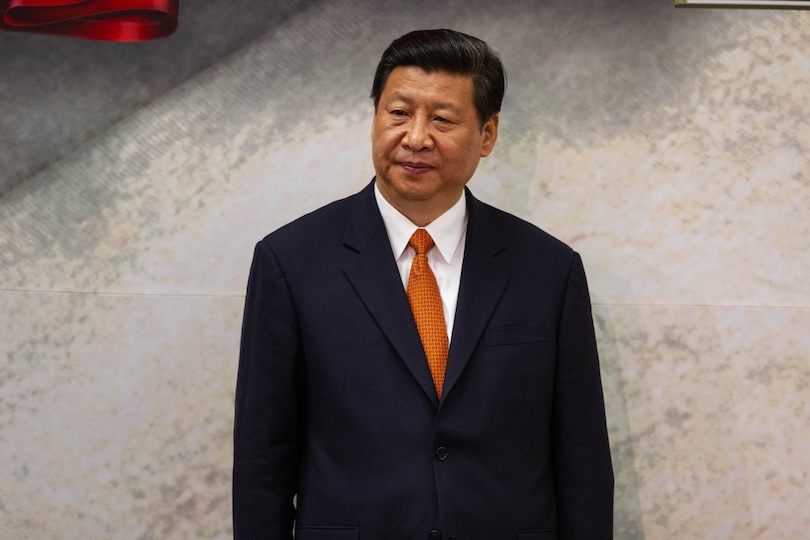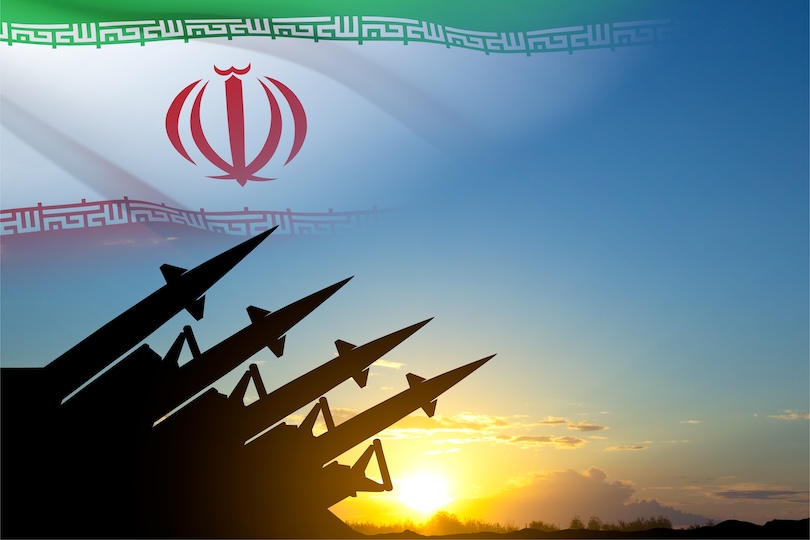The Quadrilateral Security Dialogue, known as the Quad, has undergone a significant transformation in recent years, becoming a central pillar of India’s foreign policy in the Indo-Pacific. Initially established to coordinate disaster relief following the 2004 tsunami, the Quad—comprising the United States, Japan, Australia, and India—has evolved into a strategic partnership focused on ensuring regional security and stability, particularly in response to China’s growing influence. As the Quad continues to expand its scope, recent developments at the 2024 Quad Summit and India’s well- negotiated disengagement with China along the Line of Actual Control (LAC) illustrate how New Delhi must adeptly balance its national interests.
In its early years, the Quad functioned as a diplomatic forum with limited practical implementation. However, since its revival in 2017, driven by shared concerns over China’s assertiveness, the Quad has shifted towards more concrete initiatives that directly address regional challenges. At the 2024 Quad Summit, new initiatives were announced that demonstrate the grouping’s commitment to reshaping the strategic and economic landscape of the Indo-Pacific. One of the key outcomes was the Quad Ports of the Future Partnership, aimed at developing sustainable and resilient port infrastructure in the region. This initiative serves as a counterpoint to China’s Belt and Road Initiative (BRI), which has been instrumental in expanding Beijing’s influence through the financing of infrastructure projects across Asia, Africa, and Latin America. India’s role in this project is crucial, as it will host the inaugural Regional Ports and Transportation Conference in Mumbai in 2025. This positioning reflects India’s increasing importance in regional connectivity and maritime security, aligning with its “Security and Growth for All in the Region” (SAGAR) vision.
The group engaged in the most significant maritime initiative to date, the Quad-at-Sea Ship Observer Mission in 2025. This mission will involve a collaborative exercise conducted by the respective Coast Guards of India, Japan, and the United States, along with the Australian Border Force, aboard a US Coast Guard vessel in the Indo-Pacific region. The primary objective of this exercise is “to improve interoperability and advance maritime safety”. The official Quad documents maintain a cautious stance regarding this mission. While the Quad countries participate in maritime exercises under the Malabar framework with other partners, this combined Coast Guard operation represents an unprecedented endeavor involving only the four partners. The previous hesitation of nations such as India to establish such a mechanism appears to have gradually diminished.
In addition to infrastructure, the Quad is making significant progress in digital connectivity and emerging technologies. The group has announced initiatives in 5G deployment through Open RAN systems, which are designed to reduce reliance on Chinese telecommunications technology. India’s institutions are at the forefront of this effort, contributing to the establishment of secure networks in the Indo-Pacific. Furthermore, the Quad’s Partnership for Cable Connectivity and Resilience focuses on strengthening undersea cable networks, essential for securing digital communications in the region, with India playing a key role in expanding cable maintenance capabilities.
These developments demonstrate how the Quad has evolved beyond a loose coalition of like-minded democracies to become a platform for tangible regional projects. This shift is crucial for India, as it enables New Delhi to contribute to regional security without explicitly engaging in direct military confrontations with China. While the Quad has become a valuable platform for India, its strategic calculus is complicated by its relationship with China. India and China have a protracted history of border disputes, which culminated in a lethal confrontation in the Galwan Valley in 2020. However, recent disengagement efforts along the LAC indicate a potential de-escalation, though the relationship remains fraught with tension. This disengagement is significant as it influences India’s engagement with the Quad and its positioning vis-à-vis China.
For India, maintaining a peaceful border with China is critical, as overt conflict could strain its military resources and weaken its position in the Quad. This is particularly relevant given that India is the sole Quad member with a direct land border with China, rendering it uniquely vulnerable to military escalations. The recent disengagement allows India to focus on strengthening its maritime security in the Indo-Pacific through the Quad and Small Islands, rather than being drawn into a prolonged military standoff on its northern border. However, this disengagement does not imply that India can afford to relax its vigilance. China’s ongoing investments in India’s neighboring countries, such as Pakistan and Sri Lanka, through the BRI continue to encircle India strategically. Thus, India’s involvement in the Quad remains crucial to counterbalance China’s influence in the region. By focusing on non-traditional security issues, such as infrastructure, digital connectivity, and capacity building, India can engage with the Quad in a manner that does not provoke overt military conflict with China but still safeguards its strategic interests.
One of the challenges India faces in the Quad is the differing strategic priorities of its partners. While the U.S., Japan, and Australia are primarily focused on the Western Pacific and countering Chinese influence in areas like the South China Sea, India’s primary focus remains the Indian Ocean Region (IOR). Quad’s new maritime initiative, including the Quad-at-Sea Ship Observer Mission, aim to enhance interoperability among the members’ coast guards and improve maritime safety. However, India’s focus on the IOR necessitates balancing its engagement in the Pacific with its core strategic interests closer to home. Hence, first & foremost, India sits to secure IOR from dragon’s influence in the Asian backyard while maintaining a limited hedging in the Pacific.
Moreover, while India’s economic relationship with China complicates its positioning, the Quad allows India to pursue alternative avenues for growth and development. By participating in projects that promote supply chain resilience and reduce reliance on Chinese manufacturing, India can strengthen its economy without alienating Beijing. The Quad’s focus on critical and emerging technologies also presents new opportunities for India to enhance its tech sector, reducing its dependence on Chinese imports in key areas such as telecommunications and AI.
India’s strategic autonomy has been a fundamental principle of its foreign policy, and its involvement in the Quad must be analyzed through this perspective. India has historically exercised caution regarding close alignment with any single military alliance, and the Quad is no exception. While the grouping does not constitute a formal military alliance, increased military cooperation within the Quad—such as the Malabar naval exercises—represents an emerging trend. Experts believe that, India must recalculate its military moves as positioning the Quad too closely with Indo-Pacific strategies may inadvertently provoke China into escalating tensions in the eastern Indian Ocean Region (IOR). It could lead to a strategic shift, potentially opening a new front in maritime rivalry that India would prefer to avoid.
India has enhanced its defense ties with all Quad members through bilateral agreements, including the Communications Compatibility and Security Agreement (COMCASA) with the U.S., which provides India with access to advanced military technologies India maintains a cautious approach regarding the escalation of tensions with China. The recent disengagement at the LAC enables India to concentrate on developing military interoperability in the maritime domain, rather than becoming involved in land & maritime conflicts. This strategic decision allows India to contribute to the Quad’s security objectives without overcommitting to direct military confrontations, which could potentially compromise its economic and diplomatic interests in the region.
India’s participation in the Quad presents both opportunities and challenges. On one hand, the Quad offers India a platform to counterbalance China’s influence in the Indo-Pacific, particularly through initiatives in infrastructure, technology, and maritime security. On the other hand, India’s unique geographic and strategic position—bordering China—necessitates careful navigation of its relationship with Beijing to avoid military escalation. The recent disengagement on the LAC affords India the opportunity to focus on the Quad’s broader strategic objectives without the distraction of border tensions.
As the Quad continues to evolve, India is likely to assume a more prominent role in shaping its agenda, particularly in areas such as digital connectivity, infrastructure development, and maritime cooperation. However, India’s engagement will remain pragmatic, ensuring that it can secure its national interests while maintaining its strategic autonomy in an increasingly multipolar world. In this hedging act, India stands to derive significant benefits from its active participation in the Quad, provided it can continue to navigate the complexities of its relationship with China and the differing priorities of its Quad partners. The future of India’s role in the Indo-Pacific will depend on its ability to leverage the Quad’s growing influence while safeguarding its own strategic and economic imperatives.

 Movie
Movie 3 months ago
87
3 months ago
87 






![Presidents Day Weekend Car Sales [2021 Edition] Presidents Day Weekend Car Sales [2021 Edition]](https://www.findthebestcarprice.com/wp-content/uploads/Presidents-Day-Weekend-car-sales.jpg)



 English (United States)
English (United States)